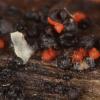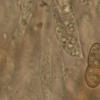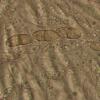
22-12-2025 00:47
Patrice TANCHAUDBonsoir, récolte à proximité du milieu dunaire

21-12-2025 21:32
Pol DebaenstHello, Garden, Burgweg 19, Veurne, BelgiumOn 10/1

21-12-2025 21:40
Isabelle CharissouBonjour, j'aimerais connaitre les références de

21-12-2025 21:31
Pol DebaenstHello, Garden, Burgweg 19, Veurne, BelgiumOn 10/1

21-12-2025 21:31
Pol DebaenstHello, Garden, Burgweg 19, Veurne, BelgiumOn 10/1

20-12-2025 23:08
Patrice TANCHAUDBonsoir, récolte sur sol sablonneux dans l'arri�

21-12-2025 09:32
Hello.A tiny ascomycete found embedded in wood in

20-12-2025 15:47
Mirek GrycHi.These grew on pine wood that was heavily covere
 Hello, a few days ago I have collected a Macroconia growing on Leptosphaeria doliolum (both of them growing on old Urtica).
Hello, a few days ago I have collected a Macroconia growing on Leptosphaeria doliolum (both of them growing on old Urtica). Ascospores in this collection measure (15.6) 16.2 - 19.9 (20.5) × (5.8) 6 - 7.2 (7.4) µm, Q = (2.3) 2.33 - 3.1 (3.4). Me = 17.9 × 6.7 µm; Qe = 2.7. They are first hyaline, then brownish, one-septate, very finely punctate. I have measured the width in the thickest part, not in the constriction.
I am not sure whether to determine it as M. leptosphaeriae or M. sphaeriae. Fungi of temperate Europe state these two taxa are perhaps identical, but Grafenhan et al. 2011 distinguish them as two species. They write: "The distinction between Macroconia leptosphaeriae and
M. sphaeriae is based on the size of ascospores and conidia in the
type collections. According to Wollenweber (1926), the ascospores
of the type material of M. leptosphaeriae are smaller (14–18 ×
5–5.5 µm) than those of M. sphaeriae (19–25 × 5.8–6.5 µm)."
Unfortunatelly I haven´t encountered any conidia, so I have to rely on ascospores. However, my values are between the values for the two species given by Wollenweber. Maybe this author measured dead ascospores (therefore smaller than my vital ones - then my collection would better fit M. leptosphaeriae)?
Thanks, Zuzana


Thank you very much for your reply. No existence of M. sphaeriae would make it much easier.
Zuzana



